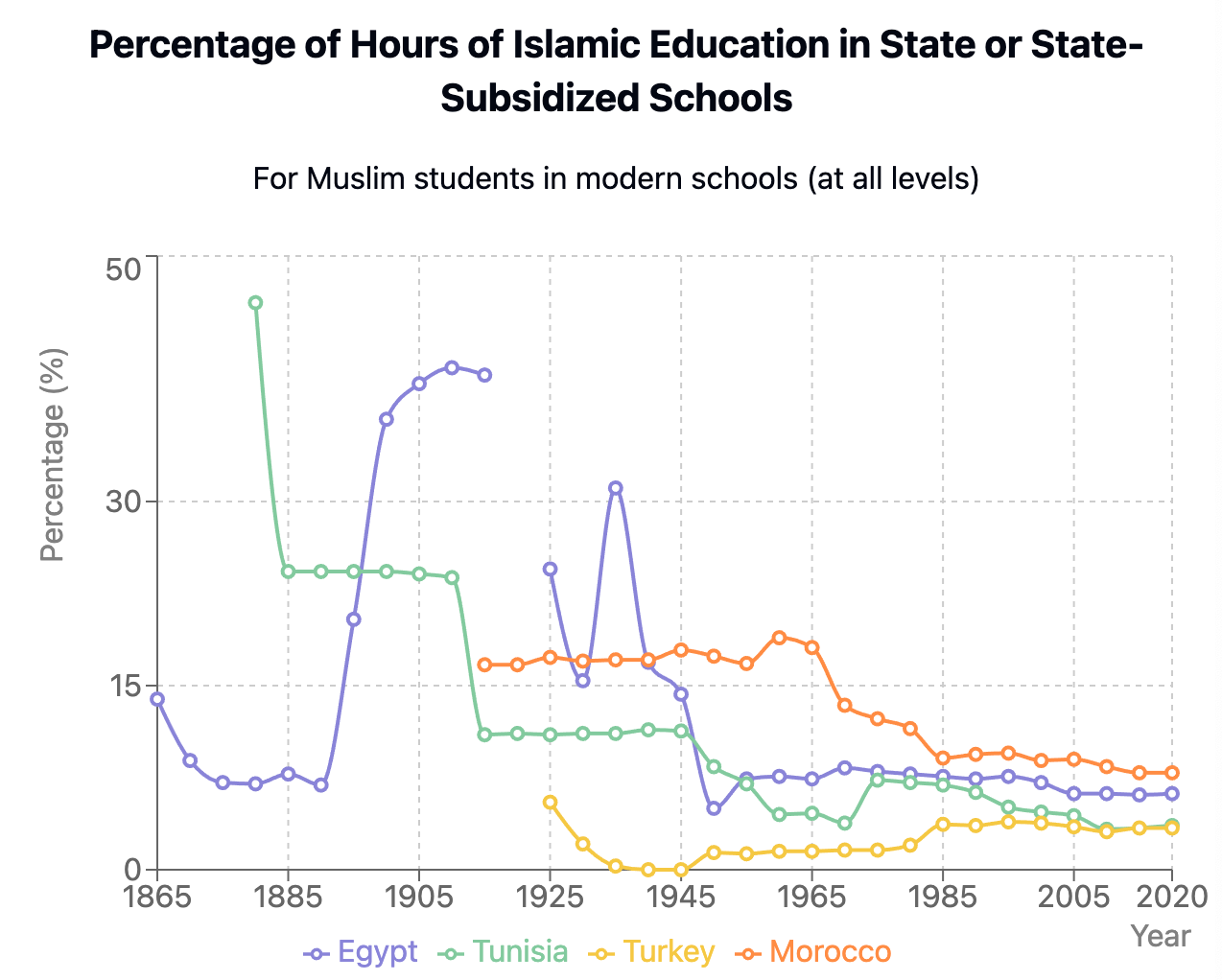"The Making of the Modern Muslim State": Podcast with Malika Zeghal
Why is religosity so strong across the Middle East and North Africa? Was this due to bottom-up religious associations or was it led by the state? In my latest podcast, Harvard Professor Malika Zeghal discusses her fantastic new book, “The Making of the Modern Muslim State: Islam and Governance in the Middle East and North Africa”.
Warning: this may rock your priors.
Zeghal suggests:
All MENA leaders (even liberalising reformists) agreed that the state had a duty as ‘custodian of Islam’
Even ‘secularizing’ MENA leaders maintained significant religious expenditures while reforming religious institutions
Mosques and madrasas have historically been funded primarily by state actors (unlike Europe and Latin America’s independently wealthy churches).
Waqf (religious endowments) were much more flexible, less restrictive, and less economically dominant than suggested by previous scholarship
Growing prosperity has enabled the state to dramatically expand religious expenditure, hours of religious education, and enrolment in specialized religious tracks.
Listen to “Rocking Our Priors” on Spotify, watch on YouTube or read the transcript below.



